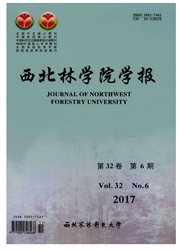

 中文摘要:
中文摘要:
多环芳烃(PAHs)是一类广泛存在于环境中的有机污染物,由于其致癌性和致突变性而受到广泛关注。采用盆栽实验,研究了栾树在3种污染水平下对土壤中PAHS的去除效果与修复机制。结果表明:在试验浓度范围内(7.35~46.23mg·kg-1),种植栾树1a后,PAHs降解率为60.69%~75.14%;比对照(无植物处理)PAHS降解率平均提高了22.96%,且以L2污染水平下降解率最大。栾树能够在一定程度上吸收与累积土壤中PAHs,且累积量与土壤PAHs的添加浓度呈正相关,根部PAHs累积量大于干叶部。修复机制反映出植物一微生物间的交互作用、微生物降解是修复土壤PAHS的主要途径。
 英文摘要:
英文摘要:
Polycyclic aromatic hydrocarbons (PAHs) are a group of organic pollutants which exist in the environments chronically. They are of particular concern because some are potent toxins or carcinogenics. In this study, pot experiments were carried out to investigate the mechanisms of the removal and accumula- tion of PAHs in soil by Koelreuteria bipinnata. The results showed that the plantat can significantly remove PAHs from soil at their initial contaminated levels. The contents of PAHs were lower in planted soil than in non-planted soil after 12months. K. bipinnata showed ability to accumulate PAHs from the soil. The contents of PAHs in its root and shoots increased with the increase of PAHs concentration in the soil. The bioconcentation factors (BCFs) in shoots were much lower than those in roots. Thus plant-microbial interactions and microbial degradation are the main mechanisms for the remediation of soil PAHs pollution.
 同期刊论文项目
同期刊论文项目
 同项目期刊论文
同项目期刊论文
 期刊信息
期刊信息
